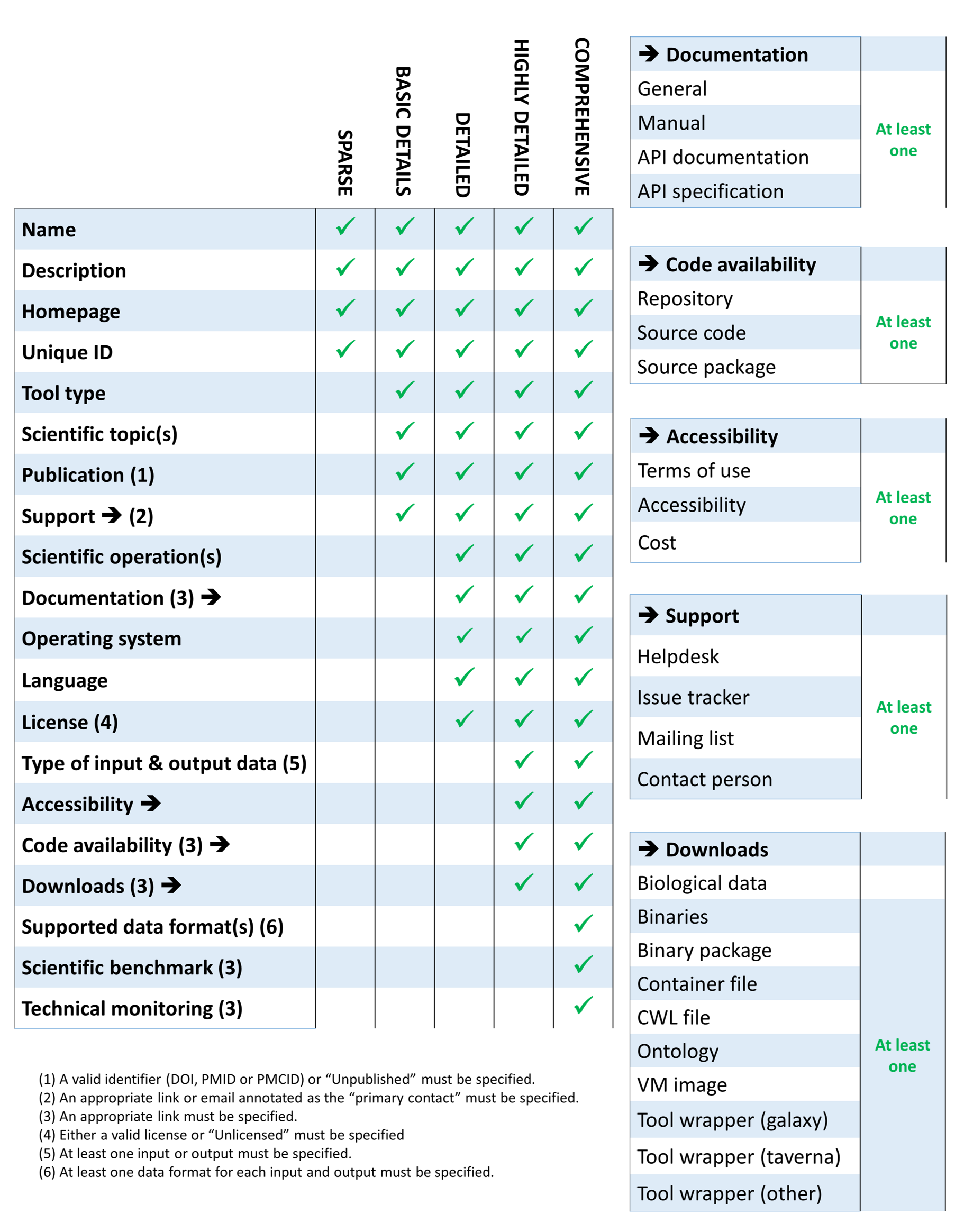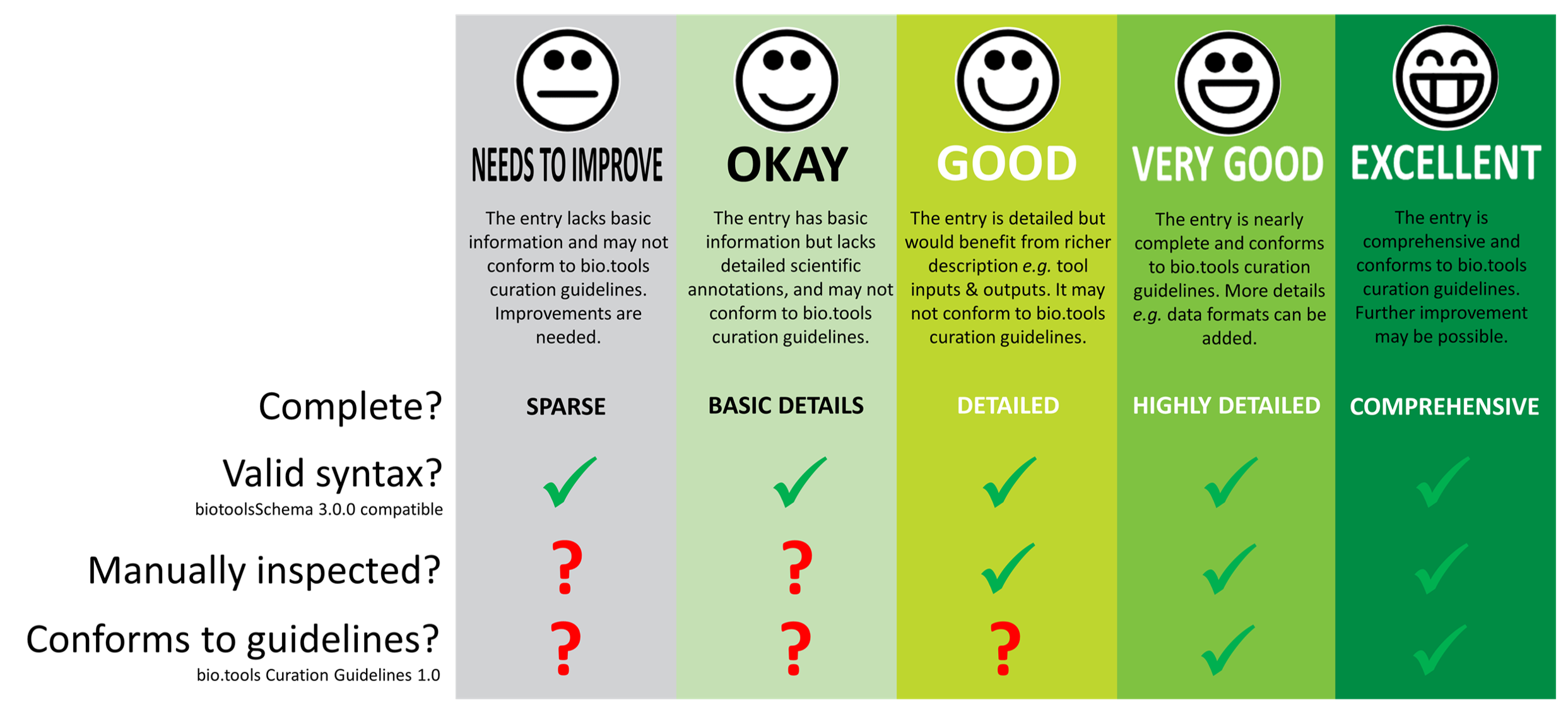bio.tools
bio.tools is a registry of software for the Life Sciences.
bio.tools uses a tool profile which provides five lists of tool attributes (see Table below) that must be specified for a software description (e.g. a bio.tools entry) to be assigned in a 5 tier ratings of description completeness. Some attributes are grouped (see tables on right) for purposes of determining adherence to the standard. For example “Documentation” is satisfied if at least one of “General” documentation”, “API documentation” or “API specification” is specified.

The corpus of bio.tools content is being improved progressively according to tiers in the standard, the aim in the first instance being to bring all entries up to at least “DETAILED” standard.
The “SPARSE” tier (name, description, homepage, unique ID) defines the minimum information requirement for new bio.tools entries. It is under discussion to allow a user to filter entries according to tiers in the standard.
The standard also provides a basis to monitor bio.tools content and label entries in various ways:
- entry completeness (“SPARSE” through to “COMPREHENSIVE”)
- whether an entry was manually inspected (by entry author, official bio.tools curator, or someone else)
- whether an entry is verified, i.e. conforms to the bio.tools Curation Guidelines
- overall entry quality (“NEEDS TO IMPROVE” through to “EXCELLENT”) - conflating the notions above

If and how to use such labels is currently under discussion.
There are several other reasons why the standard may help bio.tools:
- accessible summary of what type of information bio.tools provides
- flexible information requirement, including a minimum requirements presenting a low barrier to new registrations, compatible / enabling integration with other major related cataloguing efforts (e.g. BioContainers)
- quality tiers motivate individual entry owners to improve their entries (curation as a “game”), with a “gold standard” of entry quality for curators to aspire to
- a framework / workflow to guide tasks and priorities of curators, thematic editors and bio.tools admin
- a basis for metrics of bio.tools quality, KPIs (key performance indicators) of quality improvement objectives, and targets
- a component of branding bio.tools as a trusted source of quality tool information
Applicability and availability of attributes
The Tool Information Standard does not yet reflect the fact that different types of tool have specific information requirements. Not all attributes are applicable to all types of tool, e.g. source code is not normally available for database portals. For purposes of measuring compliance to the standard, applicability will be formally defined on a tool type-specific basis; an applicability matrix of attributes versus tool types.
The application of the Tool Information Standard depends on whether the quality of the software metadata, or the underlying software and software project, are being assessed. In the first case (metadata assessment), an attribute will only contribute to compliance metrics if, in fact, it is both applicable to that type of tool (see above) and actually available. In case an attribute is applicable but not available, a positive statement to that effect will be required during registration to get a tick for that attribute, e.g. the user would need explicitly to specify “a publication is not available” for “Publication”. In the second case (tool or project assessment) the “availability” consideration is not relevant.